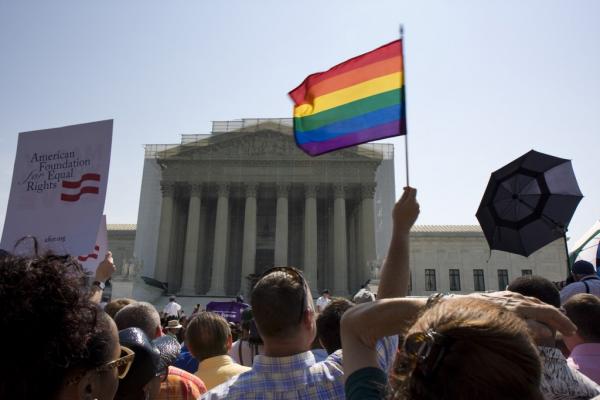Credit Photo Phiend / Flickr-Creative Commons
As reported in a front page feature of the August 4, 2104 New York Times, Supreme Court Justice Ruth Bader Ginsburg sees an inconsistency in the court’s recent rulings on gay rights and women’s rights. Reporter Adam Liptak wrote of Ginsburg:
In its gay rights rulings, she told a law school audience last week, the court uses the soaring language of “equal dignity” and has endorsed the fundamental values of “liberty and equality.”…But in cases involving gender, she said, the court has never fully embraced “the ability of women to decide for themselves what their destiny will be.” She said the court’s five-justice conservative majority, all men, did not understand the challenges women face in achieving authentic equality.
ViewPoint Blog asked two Point Scholars in law school for their thoughts about the article.
Crys O'Grady, 2014 Point Scholar at the University of Washington School of Law:
 As mentioned in the article, the Supreme Court is just now applying strict scrutiny to discrimination cases against gays -- a level of scrutiny that cases based on gender have had for many years now. I agree with Justice Ginsberg's statement that, “…cases involving gay people and women are on different trajectories."
As mentioned in the article, the Supreme Court is just now applying strict scrutiny to discrimination cases against gays -- a level of scrutiny that cases based on gender have had for many years now. I agree with Justice Ginsberg's statement that, “…cases involving gay people and women are on different trajectories."
However, the reason for this is that cases advancing gay rights have just begun to affirm the rights of gay individuals. Cases involving gay rights are at the beginning of their trajectory and are not entirely inclusive of rights of the entire LGBTQ community. When strict scrutiny was first applied to cases involving gender, women's rights were also protected in somewhat of a surge. It is most important to note that while one group is receiving more protection from the court it does not always result in the decline for another group of people. Many gay people also identify as women and are affected by both "trajectories."
Kathryn Kendall, 2012 Point Scholar at Boston College Law School:
 Adam Liptak’s article represents the current Supreme Court’s ideological struggle with what basic rights the government is obligated to recognize and protect. Indeed, the problematic nature of the archaic logic that undergirds the court’s more recent decisions involving Women’s issues is especially compounded when juxtaposed with the progress of LGBT jurisprudence.
Adam Liptak’s article represents the current Supreme Court’s ideological struggle with what basic rights the government is obligated to recognize and protect. Indeed, the problematic nature of the archaic logic that undergirds the court’s more recent decisions involving Women’s issues is especially compounded when juxtaposed with the progress of LGBT jurisprudence.
It is important to remember, however that the Supreme Court’s recent failings are not the end of the line. The “trajectories” of these issues are not set in stone. The “inconsistencies” that Ruth Bader Ginsburg recognizes can be rectified. As landmark cases such as Brown v. Board and Lawrence v. Texas demonstrate, stare decisis is only as powerful as the reading of the law that supports it.
In moving forward, we must continue to challenge the Supreme Court with cases that cast doubt on the flawed reasoning of the past. We must leverage the hardship suffered as a result of these decisions to demonstrate that full and equal protection under the law has not been achieved.

